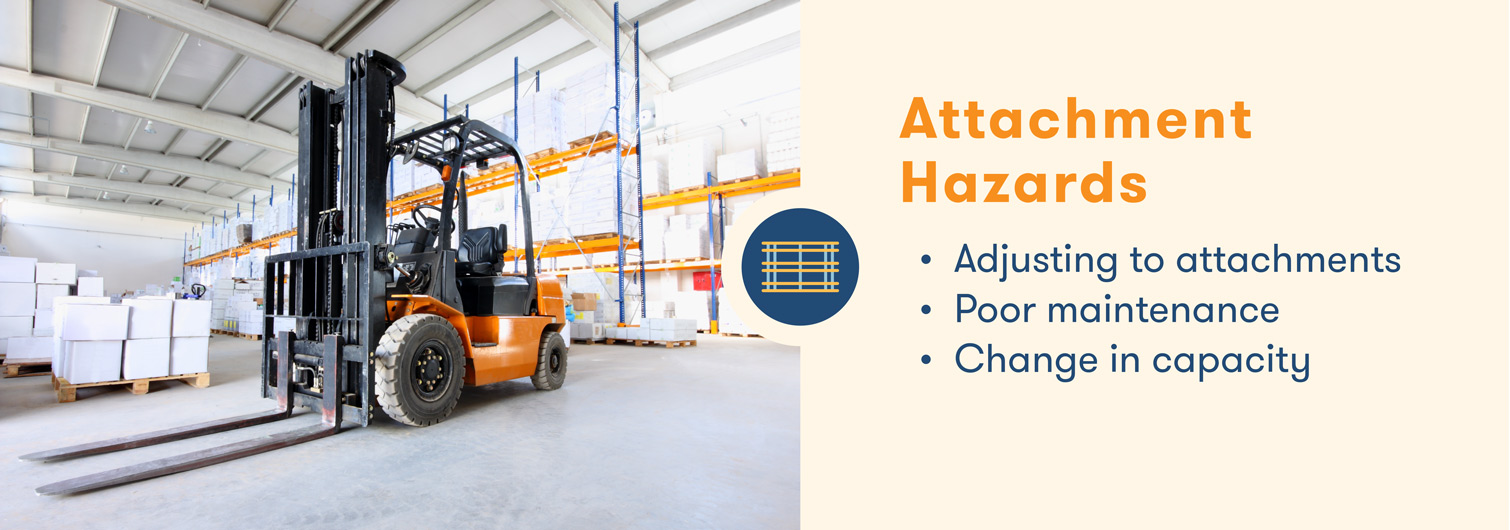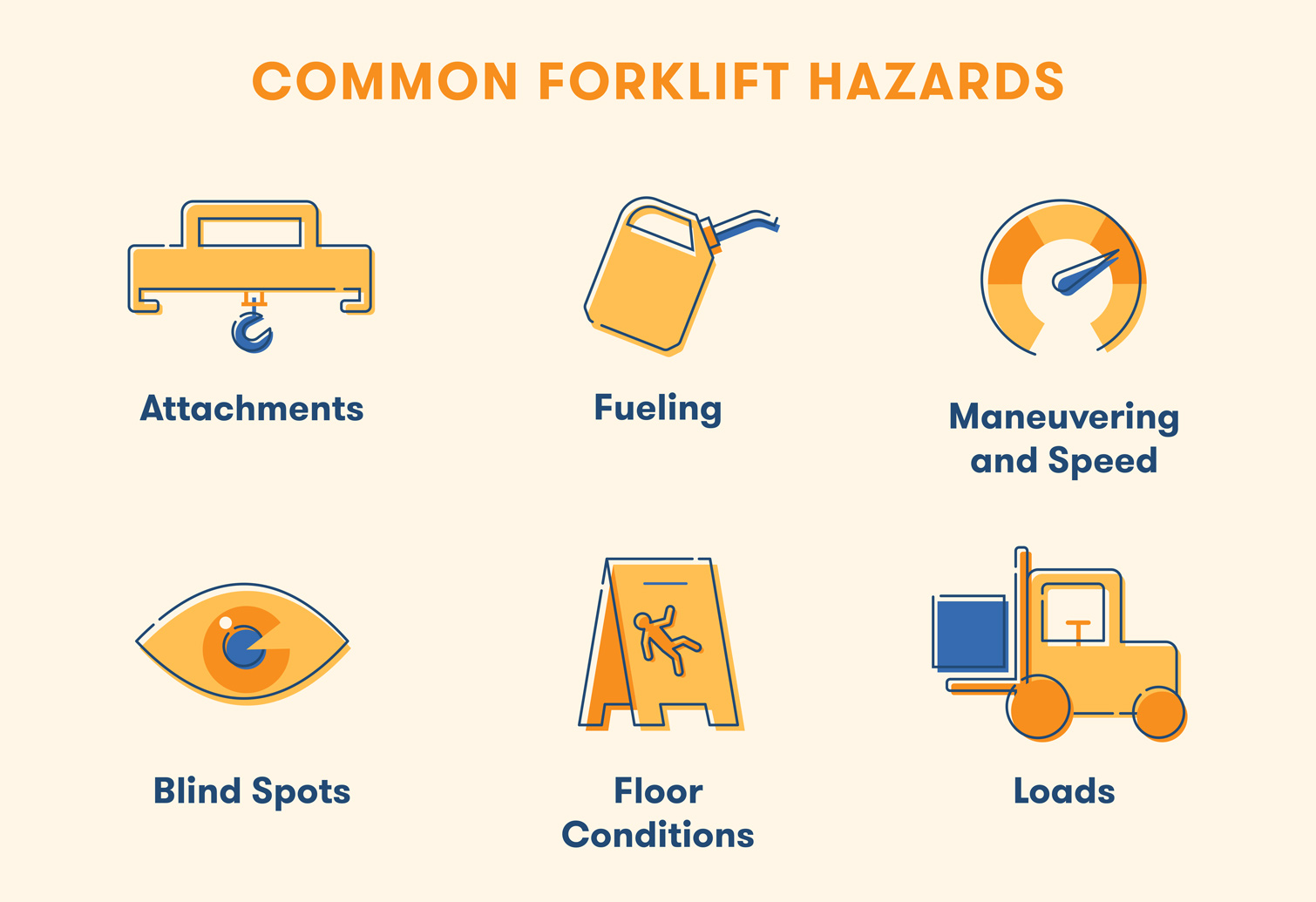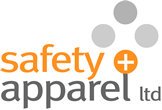Top 6 Forklift Hazards Every Workplace Should Know
Forklifts are powerful vehicles that are ideal for lifting and carrying heavy loads. Just like any type of machinery, however, these lifts also come with their own sets of hazards to look out for in the work zone. Factors like new attachments, poorly ventilated work zones and many other things can increase the risk of accidents and fatalities.
Some of the most common forklift accidents include overturns, struck with a forklift and falls from a forklift. Luckily, all of these forklift hazards are things employees can avoid with some vigilance and preparedness prior to and during operation. In addition to standard forklift training, crew members should also familiarize themselves with common forklift dangers that can occur at any time. Take a look at our guide below to see what forklift hazards to look out for in the work zone.
1. Attachments

Attachments are a source of several forklift hazards since different attachments affect both the lift’s operating clearances and overall capacity. Attachments also add weight to a lift and reduce the capacity of the load. A forklift operator should acquaint themselves with each attachment used including the safety protocols and capacity limits to account for any potential operational changes.
Poor maintenance of the attachments and forklift itself can pose safety risks as well. Worn forks, stretched chains, and other run-down parts can put you at risk of an accident. Do a thorough check of the entire lift prior to starting the job. This ensures that everything is functioning and safe to use.
You should also make sure you’re choosing the right forklift and attachments for your specific job. Check out our forklift attachment guide to see what type of lift and attachment best suits your project.
2. Fueling

Refueling and recharging poses potential safety hazards due to the fuel’s flammability risk. Diesel and propane are both flammable while battery recharging generates flammable gas. Due to this, you should never smoke near a refueling or recharging area. Poor ventilation heightens the potential risk of fires and also encourages the buildup of toxic fumes like carbon monoxide.
3. Maneuvering and Speed

Improperly driving a forklift presents its own set of dangers. Drivers can potentially collide with things like pedestrians and other tools if they’re not paying close attention to their surroundings. Maneuvering a forklift is difficult since you’ll mostly drive in reverse for most jobs due to an obstructed frontal view from the load. Rear-end steering makes the forklift take tight turns in the front but swings wide in the back. Drivers should take this into account when navigating a bustling work zone in a forklift. Narrow or cluttered aisles, high pedestrian traffic, and other outdoor and warehouse safety concerns also make maneuvering tough.
Another forklift hazard to look out for is the lift’s speed. The weight combined with speed creates momentum that is hard to stop at high speeds. To avoid this, forklift operators should follow all posted speed limits and drive at a cautious speed.
4. Blind Spots

Blind spots are especially dangerous when operating a forklift since unexpected impact causes serious injuries. Full loads obstruct the operator’s view and force them to drive backward at times as mentioned above. Drivers should be comfortable driving a forklift and should also have a spotter when maneuvering around blind spots.
Poor lighting and weather conditions can also decrease visibility and make it more difficult to navigate blind spots. It’s also essential to learn their route for the project to prepare for potential blindspots, obstacles and other forklift hazards. Employees should direct pedestrians away from any blind spots and block off the entire work area if possible.
5. Floor Conditions

The surrounding work area presents several potential forklift dangers. Debris, puddles, unstable ground and other floor obstructions can cause falls or overturns if not immediately taken into account. You should clear the ground of obstructions and hazards and plan to avoid any unfixable floor hurdles before beginning the job.
Ramps also pose a risk due to the forklift’s heavy weight. You should drive forward with the load in front when driving up the ramp. If you’re going down a ramp with a load, you should drive in reverse. Parking brakes and chocks are a must if you need to park on an incline, but should be avoided if at all possible. You should also never turn on ramps.
6. Loads

Loads are another source of possible forklift hazards depending on what and how much you’re carrying. You should always secure your loads before moving the forklift and double-check that the load is both stable and not exceeding capacity. Any of these things can result in overturns and other accidents. It’s also important to operate with extra caution when carrying hazardous materials since any spills or drops can endanger the entire work zone.

These forklift hazards are important to keep in mind when working in the field. Awareness at all times is key to preventing avoidable injuries. It’s also important to have the right types of forklift for your job since loads and terrain greatly vary between tasks. Take a look at our forklift inventory and find the right lift for your project.




